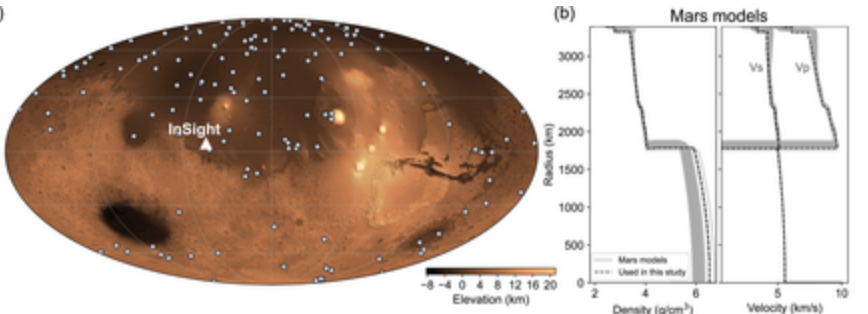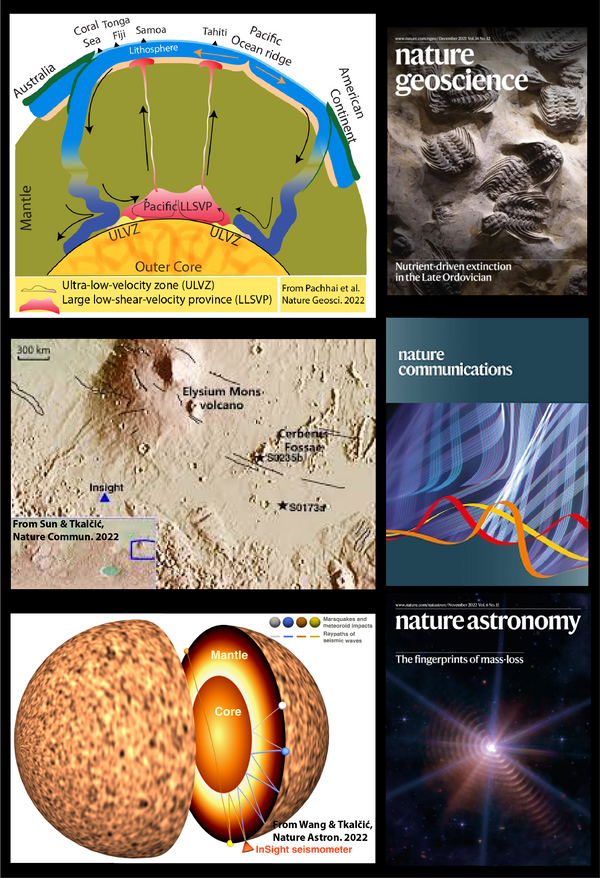Source Selection Essential to Inter-Source Cross-Correlation
Our latest paper, published in J. Geophys. Res. has just been featured in the EOS Editors’ Highlights section:

Sheng Wang and I demonstrate how to scan the interiors of Earth, other solid planets and moons with a single receiver in the presence of some seismicity caused by quakes and meteoroid impacts. Late reverberations (coda waves) rip through the planetary interiors hours after the origin time of quakes and impacts, giving a unique insight into their deep internal structures. We used the method to re-measure the radius of the Mars’ core.
We obtained a radius of 1812±20 km. But how, given that we have a single receiver, unlike on Earth, where we have thousands of them?
Nature Astronomy’s News & Views offers an explanatory note here:
https://www.nature.com/articles/s41550-022-01810-z
First, the location of the only Martian seismometer becomes a “virtual source”, and the locations of the marsquakes and impacts we recorded become “virtual receivers.” Given that the reciprocity should hold, this is possible: the waves propagating from point A to point B should see the same structure as the waves travelling from point B to point A. We then measured the waveforms’ similarity, which became a signal itself.
We discarded the first part of the waveforms from significant marsquakes and utilized only the late-surviving, weak waves that reverberate within the Martian interior. These waves penetrate through and bounce off Mars’ internal boundaries like echoes. That enabled us to detect the core and measure its radius.
Characterizing Mars’ core is essential for understanding planetary evolution and the current dynamics of Mars. It is also relevant for shedding light on why a magnetic field ceased to exist in the Martian past and thus stripped the Red Planet from a shield protecting it from harmful cosmic radiation.
Wang, S., & Tkalčić, H. (2023). On the formation of global inter-source correlations and applications to constrain the interiors of the Earth and other terrestrial planets. Journal of Geophysical Research: Solid Earth, 128, e2023JB027236. https://doi.org/10.1029/2023JB027236
Wang, S., Tkalčić, H. (2022) Scanning for planetary cores with single-receiver intersource correlations. Nature Astronomy 6, 1272–1279. Scanning for planetary cores with single-receiver intersource correlations | Nature Astronomy




